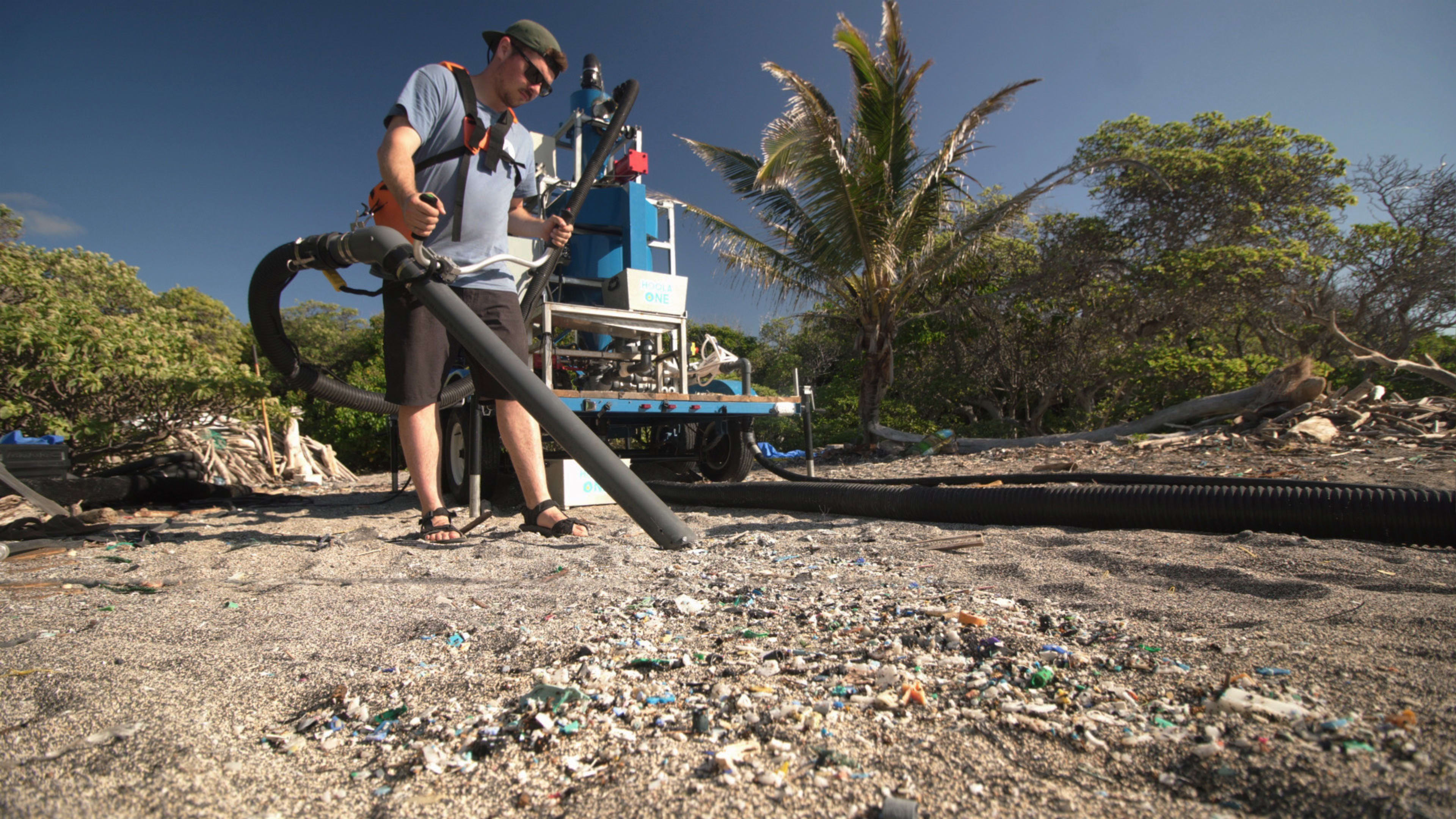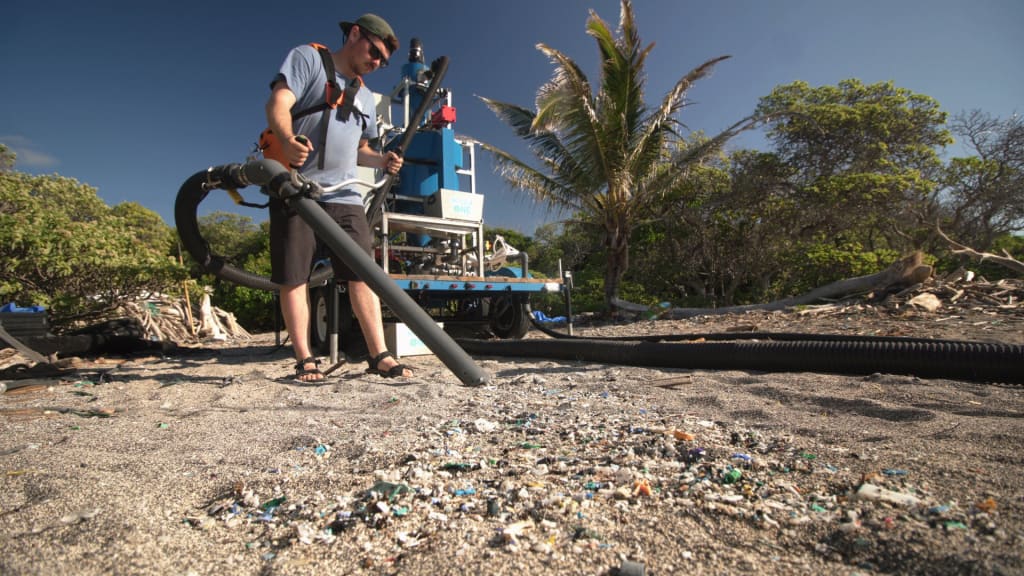A remote beach on the southern tip of Hawaii’s Big Island is known for its trash: In a typical year, volunteers collect around 20 tons of plastic waste from the area as currents wash up old toothbrushes, plastic bottles and other single-use packaging, and mounds of fishing nets. This spring, a team of engineering students visited the beach to test a new tool for cleanup—essentially, a giant vacuum for the sand.
Hawaii Wildlife Fund, a nonprofit that coordinates beach cleanups, told the students that the biggest challenge at the beach is microplastic, tiny fragments of old products that have broken down and are difficult to collect. “We realized that these little pieces of plastic are harming the coastal ecosystem and something needed to be done to tackle this problem,” says Jean-Félix Tremblay, a student in the mechanical engineering program at Quebec’s University of Sherbrooke and one of the members of the design team.
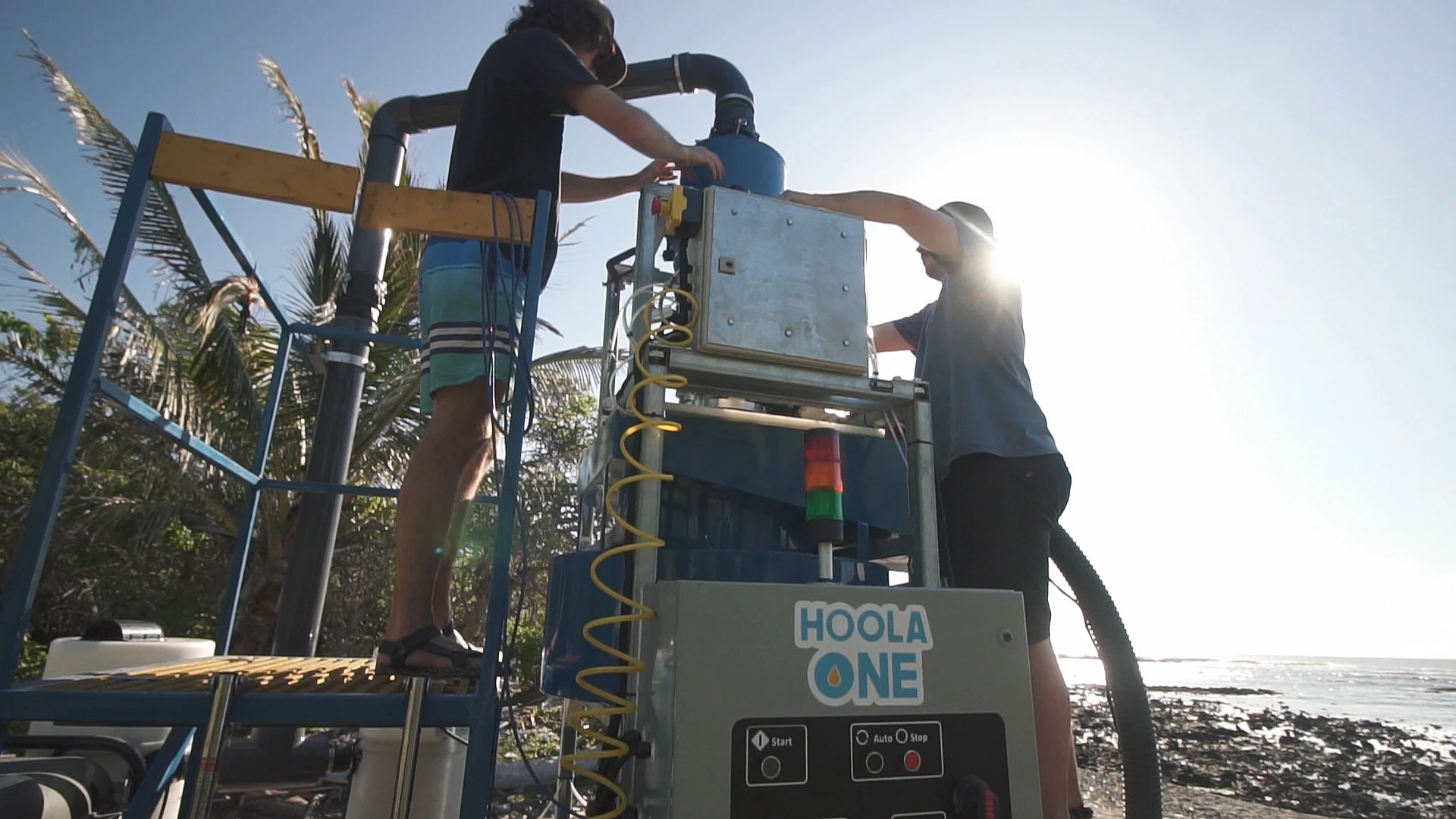
The machine, called the Hoola One, sucks a mixture of sand and plastic into a tank that separates particles by weight, so plastic can be filtered out. Clean sand and rocks weigh more and sink to the bottom, where they can be returned to the beach. The machine processes around three gallons of sand a minute.
In April, the students delivered a prototype of their machine to the beach—driving it off-road through a lava field to get there—and then spent two weeks testing the machine. After some tweaks to the vacuum system, everything worked. The students are still waiting for test results that will show how well the machine captured plastic of a certain size and, critically, whether it had any impact on tiny wildlife living in the sand.
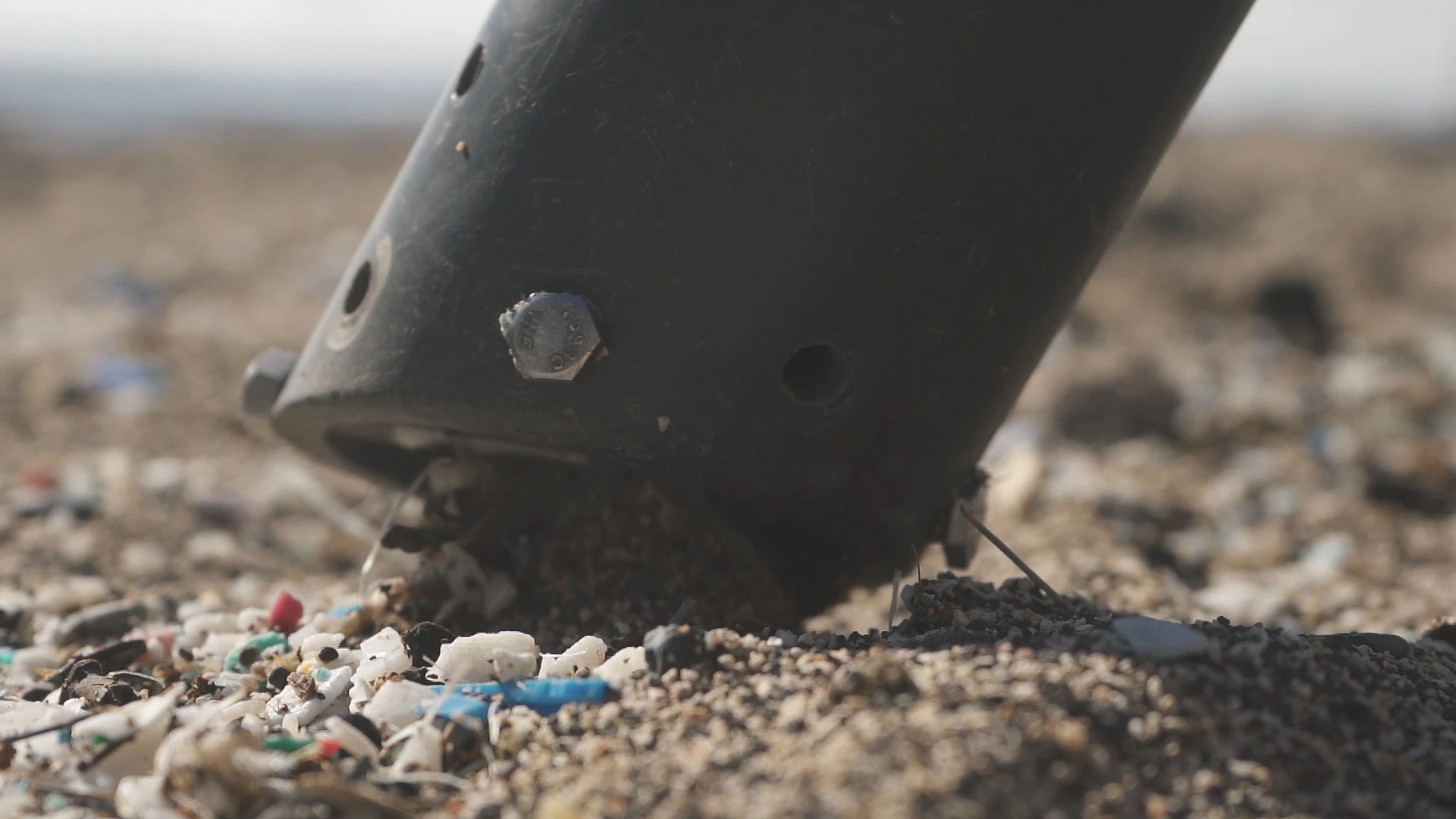
The challenge is vast. In a recent study of remote beaches in the Indian Ocean, on a chain of islands described as “Australia’s last unspoilt paradise,” researchers took samples of sand and estimated that the islands contained 414 million pieces of debris. Most of those fragments were buried in the sand rather than sitting on the surface. Other beaches likely have similar patterns of microplastic. “It’s pretty clear that a large fraction of plastic is actually under the surface of beaches, embedded in between the grains,” says George Leonard, chief scientist at the Ocean Conservancy, which organizes huge international coastal cleanups.
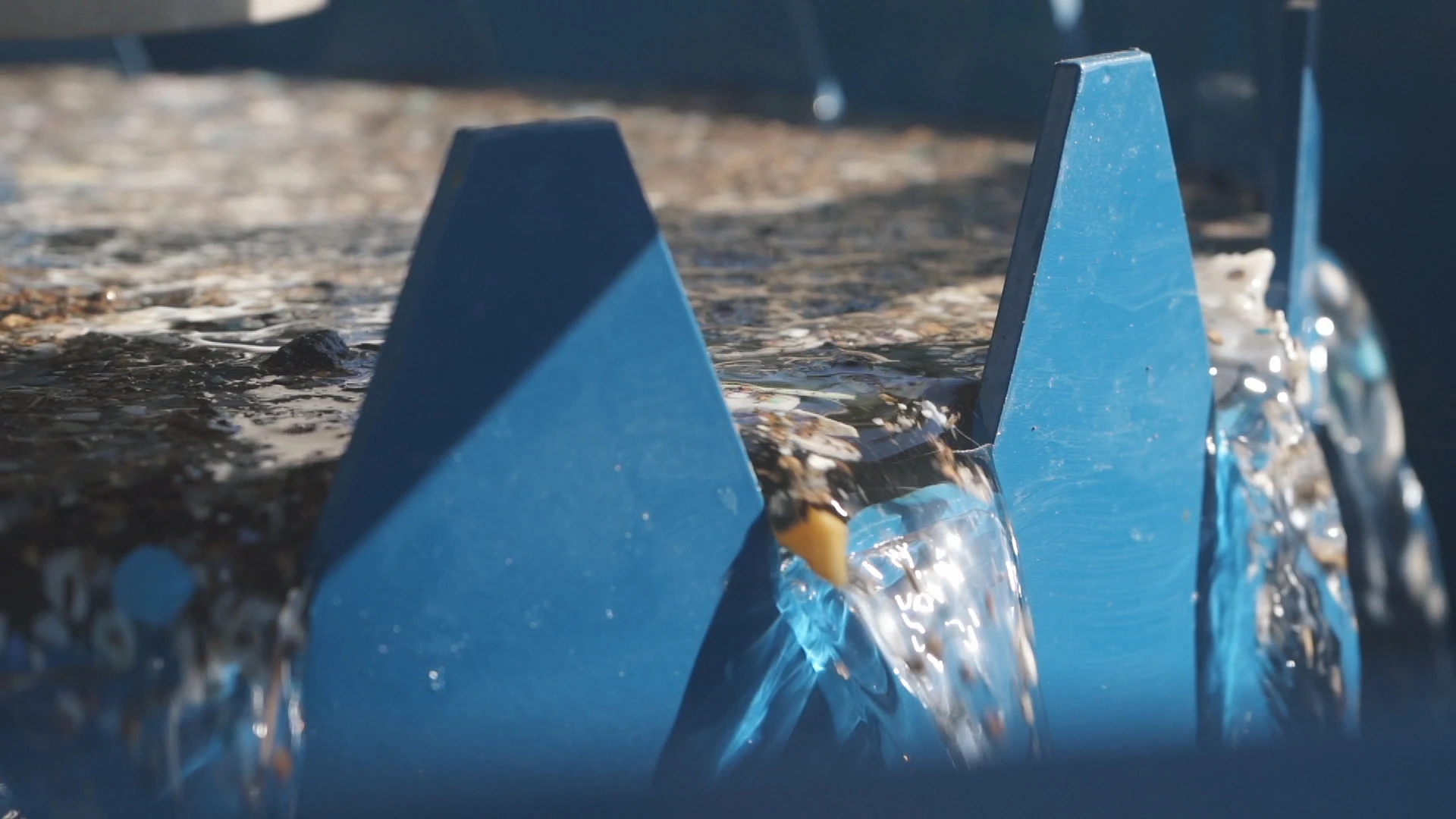
When volunteers collect larger pieces of plastic, it keeps those items from breaking down into tinier fragments that can easily get into the food chain. But “it’s a bit of a Sisyphean task to try to clean plastic off beaches,” Leonard says. Even if the students’ machine could quickly clean beaches around the world, the continual flow of new trash into the ocean would mean that cleanup could never end. Leonard compares it to the Ocean Cleanup project, which aims to collect plastic from the Pacific Ocean if it can surmount some technical hurdles.
“If you really want to solve this problem, you need to solve this problem way farther upstream, before these materials ever get to the ocean,” he says. “The least effective, and the most difficult, and probably the least cost-effective solution of this kind is to clean up the middle of the open ocean. I think the same applies on beaches. In fact, cleaning plastics out of beaches may be even harder than getting plastics out of the open ocean…Both of these efforts really draw the public’s attention to this problem and the willingness of individuals to think creatively about solutions. But the corollary of that is we really have to stop materials from ever getting to the ocean first.”
The Ocean Cleanup founders would agree—though they would also make the point that even if plastic pollution from land stopped immediately, we’d need to find a way to deal with the plastic that’s already in the ocean. For beach cleanups, three of the engineering students are now working on a smaller design of their machine that they hope can be widely used. “We want to make our solution available to every community in need,” says Samuel Duval, one of the engineers.
Recognize your brand’s excellence by applying to this year’s Brands That Matter Awards before the early-rate deadline, May 3.
